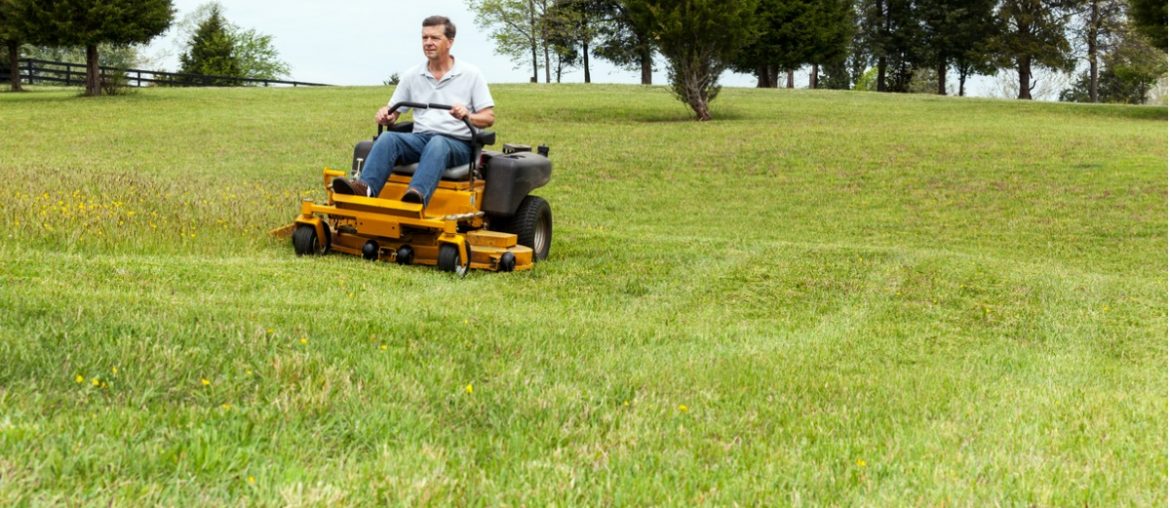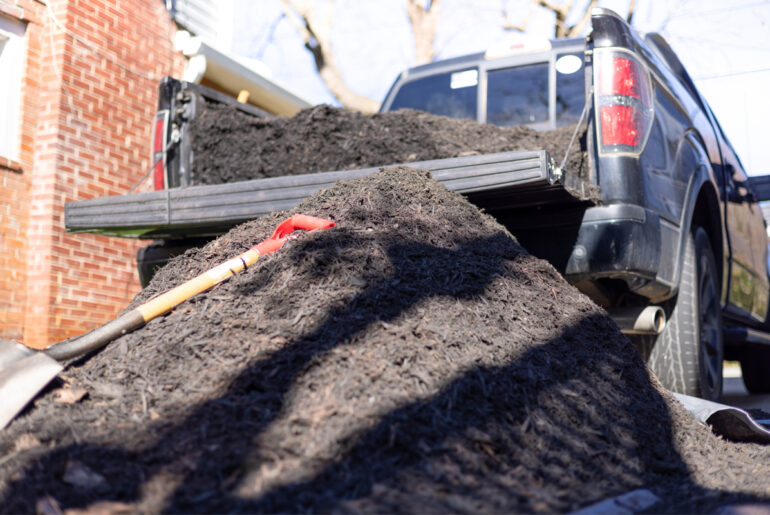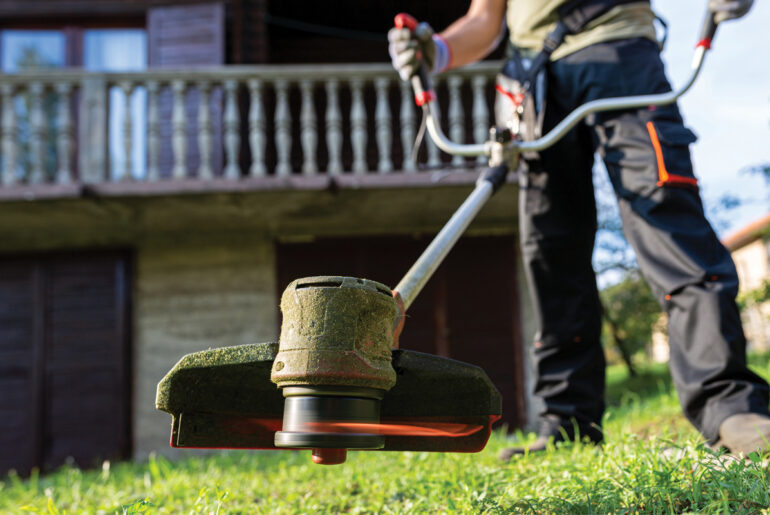When you’re starting or growing a lawn care company, one of the most crucial things is to make a great first impression on clients by using ideal products. But if you’re using an old rear-engine riding mower that’s only capable of making sweeping turns, you’ll likely struggle to retain clients.
Remember, lawnmowers capable of making sharp turns can cut grass far more efficiently, especially when mowing around flower beds, shrubs, trees, driveways, and much more. Likewise, zero-turn lawn mowers can increase your cutting efficiency, resulting in faster job completion and satisfied clients.
Still, with so many commercial zero-turn mowers on the market, selecting top-rated zero-turn mowers can be challenging. Fortunately, you can use this guide to choose the best zero-turn mower for your lawn care business.
- 1. Best Zero Turn Mower (Overall): Toro TimeCutter 50 in.
- 2. Most Reliable Zero-Turn Mowing: Husqvarna MZ61
- 3. Best Zero Turn Mower (Hilly Terrain): Cub Cadet Ultima ZT2
- 4. Easiest Operation: CRAFTSMAN Z5800
- 5. Best Zero Turn Mower (Budget Pick): John Deere Z345M
- Zero-Turn Lawn Mower Buying Guide
- Saving Time With Lawn Care Software
- Frequently Asked Questions
- Final Thoughts
1. Best Zero Turn Mower (Overall): Toro TimeCutter 50 in.
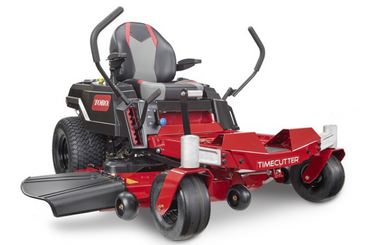
The Toro TimeCutter 50 in. is an ideal balance of utility and price. While it’s not the most impressive zero-turn mower in terms of cutting width or speed, it’s a reliable, comfortable, and capable option well suited to lawncare businesses of all sizes.
The long side discharge chutes keep grass clippings and leaves from flying into your face while riding, and the 23-horsepower Kawasaki engine is surprisingly robust.
But this mower is also chock-full of thoughtful features, including an under-seat storage area, an easy step-up deck ledge, and a removable cover for quick repairs and maintenance. In addition, with a padded, comfortable seat and a rubberized set of armrests, this riding zero-turn mower is exceptionally comfortable.
Pros
- Equipped with a powerful Kawasaki V-Twin engine
- The seat is equipped with plenty of padding for a comfortable ride
- Simplified controls for effortless operation
- Covered by an impressive three-year warranty
- Hydrostatic transmission
Cons
- Rear tires can slip across wet grass
Specifications
Cutting Deck Size: Width: 50 inches Number of Cutting Blades: 3Terrain Type: Flat Cutting Capacity: Up to 4 acres Maximum Speed: 7mph Horsepower: 23 HP
2. Most Reliable Zero-Turn Mowing: Husqvarna MZ61
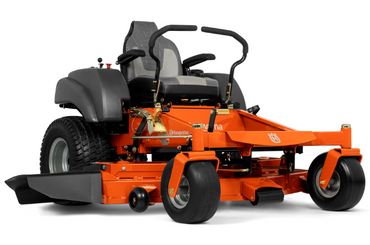
Lawncare specialists looking to make the best possible investment may want to choose the Husqvarna MZ61. This zero-turn riding mower is one of the most reliable and capable options, making it one of the best residential zero-turn mowers with an astounding 27 horsepower and a speedy 8.5mph top speed.
The 61-inch cutting mower deck width with a rugged frame and rear wheels can mow down up to 5 acres of tall grass in about an hour, making short work of massive properties. Additionally, the 5-gallon gas tank takes a while to run dry, ensuring that you’ll be able to finish jobs in record time without pausing to check your fuel tank volume.
Pros
- It offers a superior 61-inch cutting deck width
- Features a powerful Briggs & Stratton engine
- One of the fastest zero-turn lawnmowers with a top speed of 8.5mph
- Impressive 5-gallon gas mower tank for extended cutting sessions
Cons
- It is one of the most expensive residential zero-turn lawnmowers
Specifications
Cutting Deck Size: Width: 61 inches Number of Cutting Blades: 3Terrain Type: FlatCutting Capacity: Up to 5 acres Maximum Speed: 8.5mph Horsepower: 27 HP
3. Best Zero Turn Mower (Hilly Terrain): Cub Cadet Ultima ZT2
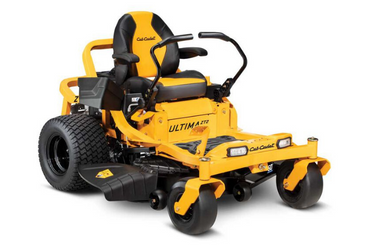
Zero-turn riding lawn mowers aren’t known for their hill-climbing capabilities. But the Cub Cadet Ultima ZT2 is an exception. It’s ready to tackle slopes and flat terrain, moving with ease thanks to its powerful engine.
With a maximum speed of 7.5mph, this mower is also faster than most. But speed isn’t the only thing this model has going for it! The ZT2 also features a cutting deck width of 60 inches, one of the largest cutting widths available on a zero-turn mower.
Pros
- One of the few top-rated zero-turn mowers capable of handling hilly terrain
- Affordably priced considering its size and features
- Lengthy side discharge chute keeps cuttings and leaves far away during operation
Cons
- Requires a lengthy assembly (five hours or more) if shipped directly to your home
Specifications
Cutting Deck Width: 60 inches Number of Cutting Blades: 3Terrain Type: Hilly and FlatCutting Capacity: 4+ acres Maximum Speed: 7.5mph Horsepower: 24 HP
4. Easiest Operation: CRAFTSMAN Z5800
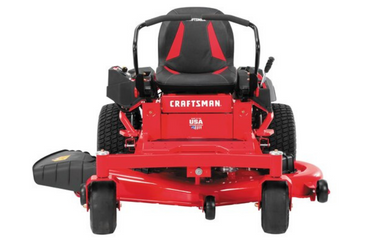
Many riding zero-turn lawnmowers have an awkward control setup, with speed-changing throttles near the deck instead of the armrest. They might also have directional arms that hang off to the side, making for a frustrating loading and unloading process.
But the CRAFTSMAN Z5800 has compact directional arms and clever ergonomic controls. This makes it a prime choice for first-time zero-turn mower owners. The full-traction rear tires are also an excellent addition, ensuring that this mower won’t slip and skid over wet lawns.
Pros
- All controls are centrally located and easy to operate
- Rubber padding reduces vibrations and increases comfort
- Maneuvers easily for maximum efficient mowing
Cons
- It doesn’t come equipped with an hour-meter
Specifications
Cutting Deck Width: 54 inches Number of Cutting Blades: 3Terrain Type: FlatCutting Capacity: Up to 3 acres Maximum Speed: 7mph Horsepower: 24 HP
Start Using Lawn Care Software!
5. Best Zero Turn Mower (Budget Pick): John Deere Z345M
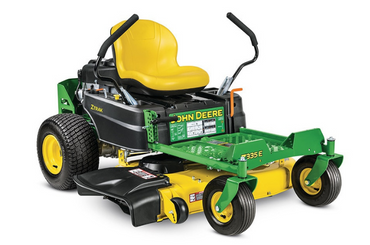
Owning a piece of John Deere equipment is a dream come true for many, and you can turn that dream into a reality when you purchase this John Deere Z345M zero-turn lawn mower. Even better, this model is available for about half the price of higher-end zero-turn riding mowers!
While this lower price is reflected in the shorter cutting deck (only 42 inches wide), this capable riding mower offers an above-average 22 horsepower. It can reach an average top speed of 7mph.
These features ensure that you’ll be able to trim small-to-medium properties in a flash! Just be sure that you only use this John Deere mower on flat terrain, as it doesn’t fare well with hills and holes.
Pros
- One of the most affordable zero-turn mowers
- Features simple controls that are easy to master
- Practical accessories (like a foot pedal) are available for this machine
Cons
- Side-discharge grass chutes don’t extend very far
- Cutting deck width is smaller than average
Specifications
Cutting Deck Width: 42 inches Number of Cutting Blades: 2Terrain Type: FlatCutting Capacity: Up to 2 acres Maximum Speed: 7mph Horsepower: 22 HP
Zero-Turn Lawn Mower Buying Guide
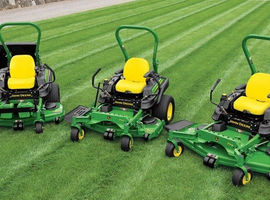
Choosing the best 0-turn mowers for your lawn care business can be challenging. After all, there are several great options from which to choose! Fortunately, you can simplify the shopping process by keeping a few core factors in mind.2
Let’s explore the most crucial aspects you’ll want to consider. That way, you can choose a model that fits your needs, budget, and preferences.
Cutting Deck Width

Your chosen riding mower’s cutting deck width is one of the most important factors you’ll need to consider. The cutting deck width determines how much grass you can cut in one pass.
Mowers with a lower cutting deck width are best for tight spaces and smaller yards, while those with higher cutting deck widths are unbeatable when tending to large properties. Naturally, the better option depends on the types of yards you’re working on.
Engine Horsepower
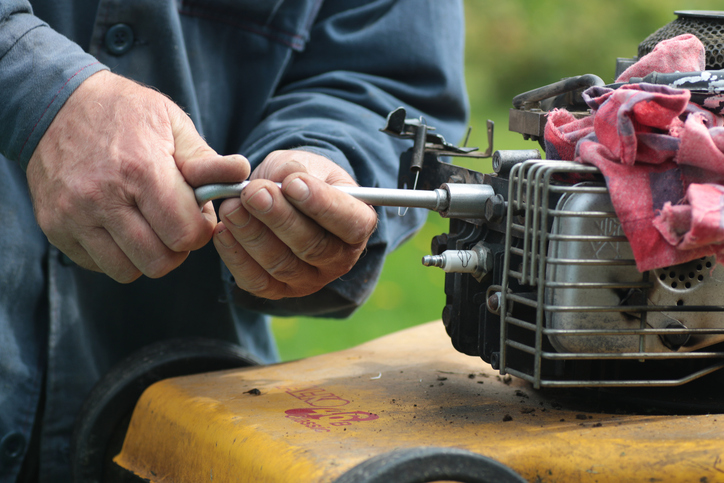
A zero-turn lawn mower’s horsepower (HP) often determines its speed and pulling power. Consequently, many top-rated zero-turn mowers feature outstanding horsepower ratings, leaving standard push mowers in the dust.
Consider this: the average push mower engine type offers between 4 and 10 HP. But a zero-turn lawn mower has engine options that can reach up to 26 HP! That engine power and speed equate to faster cuts, engine noise, and more powerful towing capabilities.
That said, the average horsepower for a zero-turn riding mower is 20. Zero-turn mowers with a higher HP rater are often pricier, which is something you’ll need to consider when sticking to a budget.
Terrain Type

Before you purchase a zero-turn lawn mower, you’ll want to check its listed terrain type. Generally, riding lawn mower terrain types fall into one of two categories: flat or hilly. The best choice for you depends on the types of properties you work on.
Still, zero-turn riding mowers that are suitable for hilly terrain tend to be pricier than those graded for flat terrain. But with this higher price often comes increased power, making hilly zero-turn lawnmowers the better choice for towing.
Ease of Use
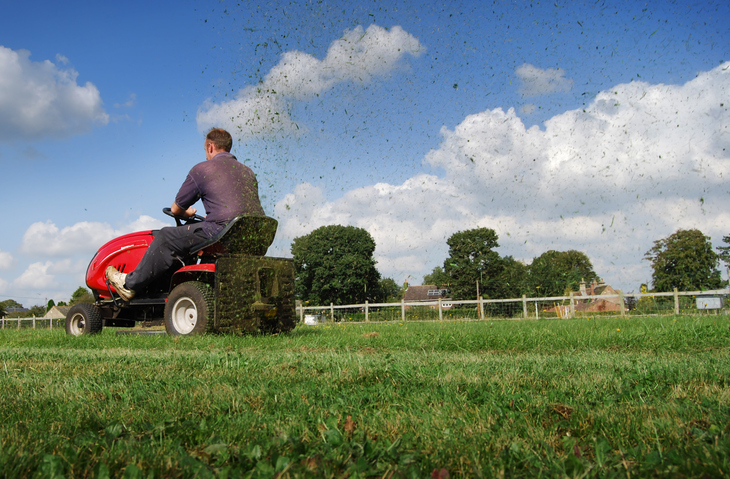
Push mowers are easy to master, as most feature a simple crank or on/off switch. To get this kind of mower going, you only need to turn it on and start pushing! But riding mowers, especially top-rated zero-turn mowers, are more challenging to master.
If you’re unaccustomed to using a riding mower, you may struggle to get the handle of a zero-turn mower. Additionally, it’s best to slowly transition to more complicated models when switching from a rear-engine riding mower to a zero-turn lawn mower.
Fortunately, some of the most affordable zero-turn mowers feature relatively simple controls. Still, you’ll want to practice using your new zero-turn mower before heading to a client’s property. Doing so will help prevent embarrassing mistakes and long mowing times.
Comfort

When your lawn care company has reached a point where a zero-turn mower is a worthwhile investment, you’re likely tending to several yards or large properties each day. As such, you’ll likely spend most of your working hours sitting atop your lawn mower.
For that reason, it’s essential to consider physical comfort when choosing a zero-turn mower. Not all riding mowers are equally comfortable, so it’s an excellent idea to choose a model that comes with a cushioned seat and armrests.
Otherwise, you may find that your back and arms are sore and achy at the end of each day.
Price

If you’ve recently started your lawn care business or are on a tight budget, zero-turn mowers may be out of your price range. After all, while the average push mower might cost between $200 and $500, zero-turn lawn mowers feature an average price of about $3,500.
This price skyrockets for high-end commercial options, with some zero-turn lawnmowers costing more than $10,000! So, if you’re not prepared to invest in one of these efficient grass-cutting machines, you may want to opt for a standard push mower instead.

Saving Time With Lawn Care Software
In today’s fast-paced world, time is of the essence. One way to streamline your lawn care business and save time is by utilizing lawn care software. This software can help you manage appointments, track customer information, schedule services, and even automate billing processes.
Lawn care software helps streamline appointment scheduling. Clients can easily check availability and schedule appointments with just a few clicks. This enhances communication and productivity.
Benefits of using RealGreen Software
RealGreen is a comprehensive tool designed specifically for lawn care businesses, offering a wide range of benefits that can greatly enhance efficiency and productivity. Here are some key advantages of using RealGreen’s lawn care software:
1. Streamlined Communication: RealGreen allows you to easily communicate with your clients, staff, and vendors through automated messaging features. This ensures that everyone is kept informed and up-to-date on important information.
2. Enhanced Scheduling: With RealGreen’s lawn care software, you can create and manage schedules for your lawn care services with ease. This helps you optimize your workflow and ensure that appointments are efficiently organized.
3. Customer Management: This lawn care software provides a centralized platform for managing customer information, including contact details, service history, and preferences. This allows you to provide personalized service and build strong relationships with your clients.
4. Billing Automation: RealGreen offers billing automation features that help streamline the invoicing process, reduce errors, and ensure prompt payment. This saves you time and effort while improving cash flow for your business.
5. Reporting and Analytics: RealGreen’s lawn care software provides valuable insights through detailed reporting and analytics tools. This allows you to track key performance indicators, identify trends, and make data-driven decisions to optimize your lawn care business.
Transform your lawn care business with RealGreen, boosting efficiency, saving time, and delivering top-notch service to homeowners.
Frequently Asked Questions
Do you have further questions about zero-turn lawnmowers? If so, be sure to check out the related questions and answers below!
What Is the Average Life of a Zero-Turn Mower?

The lifespan of a zero-turn mower varies depending on fuel type, maintenance habits, and usage.
Well-maintained gas-powered zero-turn mowers that are used once or twice each week tend to enjoy the longest lifespans. These mowers can last decades!
However, replacing your mower’s engine can be expensive. For that reason, you may choose to limit maintenance to replacing cutting blades, changing the oil, and keeping the mower clean.
In this case, you can expect your zero-turn mower to last between 2,000 and 5,000 hours. After all, at 5,000 hours, most gas-powered lawn mowers experience engine failure. Electric zero-turn lawn mowers can last up to five years, as that’s about how long their batteries last.
What Are the Disadvantages of a Zero-Turn Lawn Mower?
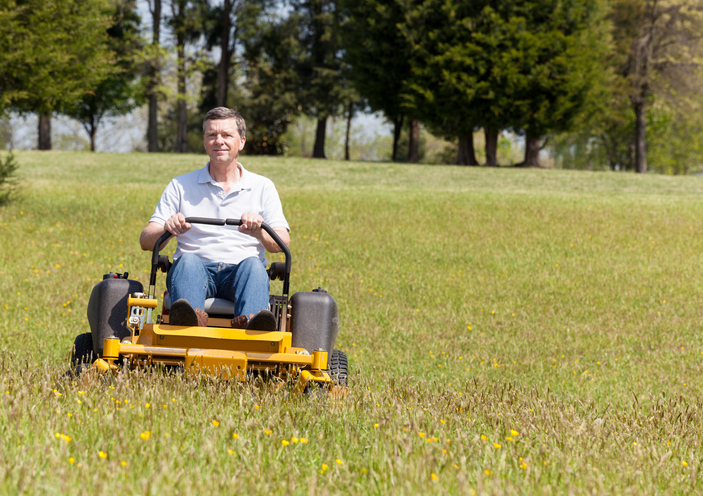
While zero-turn mowers could be one of the best tools for your lawn care business, they’re not without potential drawbacks. Zero-turn lawn mowers could be a bad investment because they’re:
- Not suitable for beginners
- More costly than lawn tractors or rear gas engine riding mowers
- Less fuel-efficient than push mowers
- Challenging to control when descending steep slopes
- Prone to lifting when climbing up slopes
Your personal preferences and professional needs will determine whether a zero-turn lawn mower is a suitable choice for your mowing experience.
Can You Pull Things Behind a Zero-Turn Mower?
It’s possible to pull wagons, trailers, and lawn sweepers behind a zero-turn mower. However, you’ll need to choose a lawn mower with plenty of power (preferably one with a Yamaha or Briggs engine) and a high weight capacity.
Final Thoughts
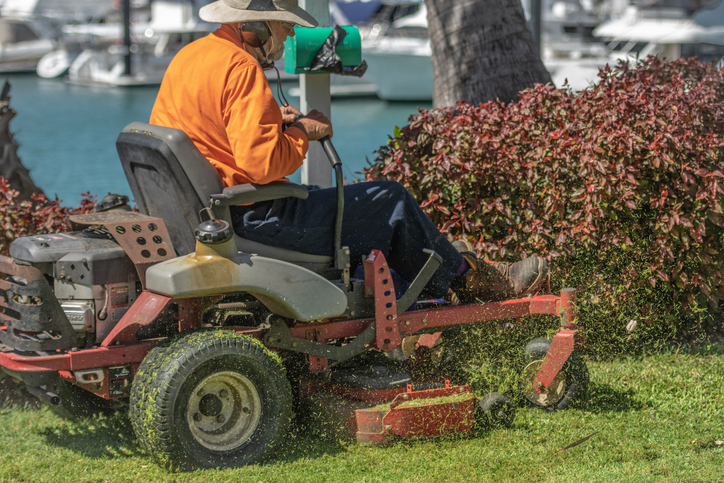
A zero-turn mower can turn on a dime, making it a valuable tool for lawncare specialists looking to maximize their lawn-cutting efficiency. Though there are several top-notch options from which to choose, those listed in this guide may be your best bet.
Still, you can use the buying guide above to select the best zero-turn mower for your lawn care business. Remember, cutting deck width, horsepower, and terrain type are some of the most vital factors to consider when choosing a top-rated zero-turn lawn mower.

